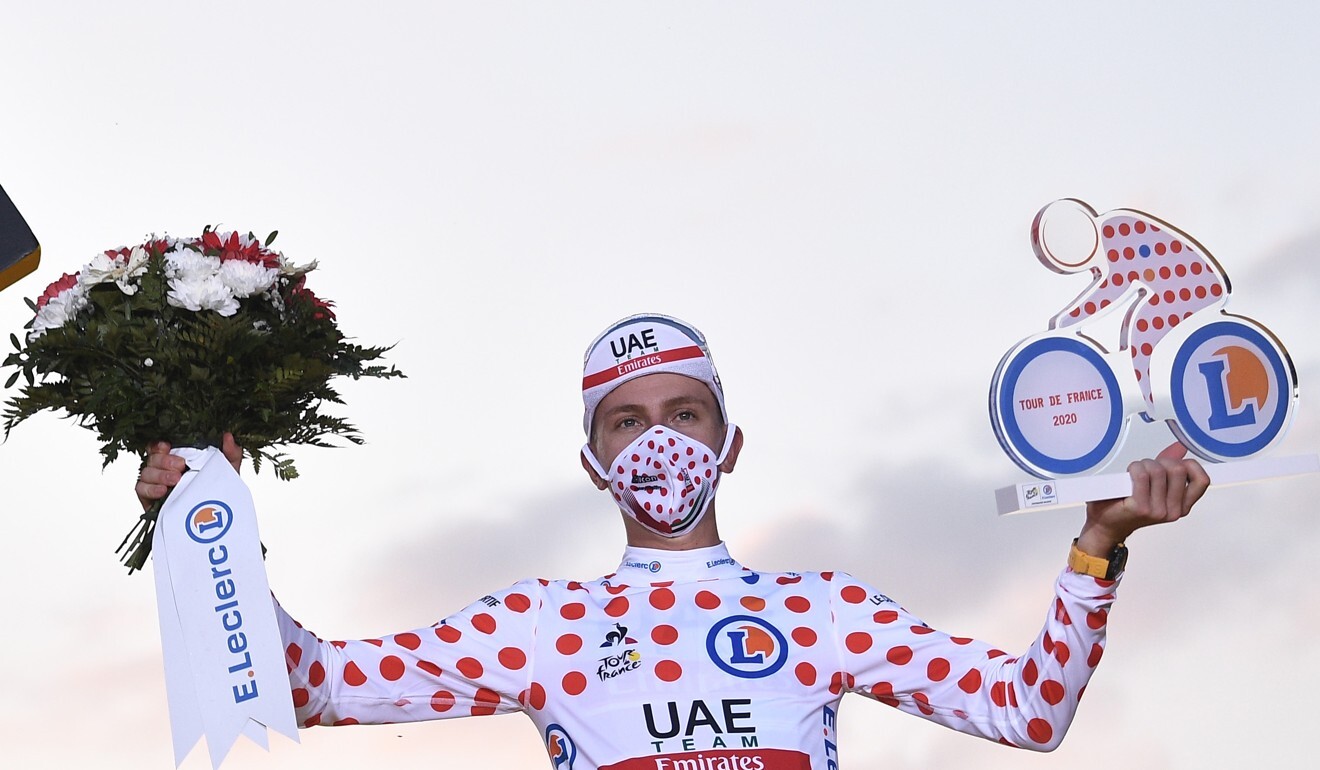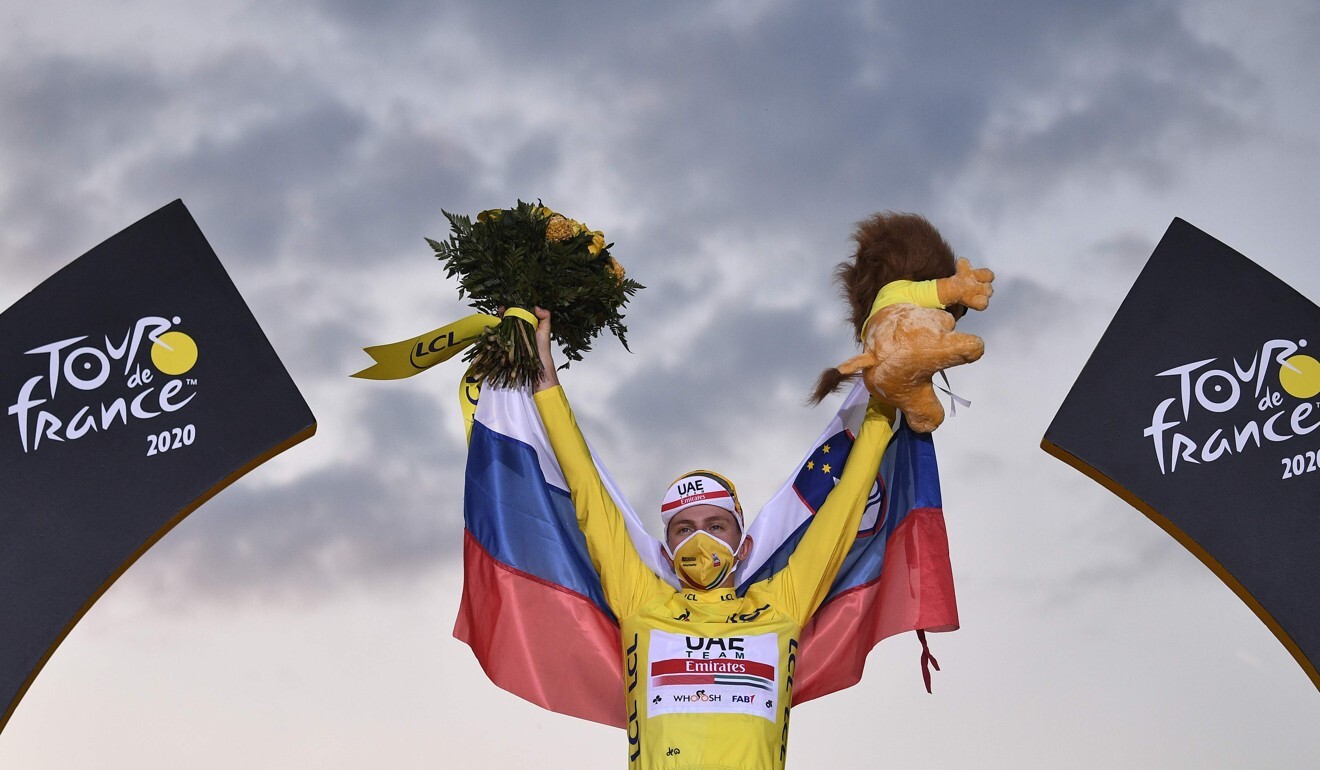
Explainer | Tour de France: stages, jerseys, tactics and the chosen ones – the complicated three-week cycling race is like no other
- The most famous cycling race – organisers claim 3.5 billion people tuned in to watch in 2018 – is a masterclass is tactics, not just in fitness
- Here is your definitive guide to how the 21-stage Tour de France works
The top professional cycling teams in the world will set off from Brest in northeast France on June 26 to take on the Tour de France, one of the most watched annual sporting events in the world (organisers claim an incredible 3.5 billion people tuned in to watch in 2018, according to reports).
Teams select eight riders and, depending on their stature and aims, the rosters usually consist of one or two outstanding talents who will aim for the overall honours, with a backup cast to help them. More often than not a team also has a sprinter to battle for flat stage wins. Teams without an overall challenger focus mostly on riders capable of winning daily stages.
This is the 108th edition of the race (paused only for the two world wars) that was originally launched to promote the L’Auto newspaper. Riders competed on single speed roadsters, often over unpaved roads. For the first edition in 1903 some 60 riders covered a staggering 2,428km in just six days (25.6km/h average by the winner).
This year the riders will cover 3,417km, with 21 stages (plus the two regulatory rest days) with the race speed averaging just over 40km/h. There is also a daily time cut; depending on the stage and the speed, riders must finish within around 12 per cent of the stage winner’s time, or be excluded.

There are three “grand tours” in professional cycling; the Giro d’Italia, the Vuelta a’ Espana, and the Tour de France, with the latter being by far the most prestigious. This year’s race is almost entirely in France, just dipping into Andorra for one stage finish and a rest day.
Usually the race starts in, or passes through, neighbouring countries, although Covid-19 has kept things very much in France this year. Most stages start and finish in a town and they pay handsomely for the privilege, and the guaranteed global media coverage that goes with it.
The Stages
Stages average out at around 180km, with the exceptions being the two shorter individual time trial stages. The route is always a mix of flat stages (for the sprinters), rolling stages (for breakaway riders), mountain stages (where the overall race is generally decided), and the time trials (which can be decisive in a close run race).
The chosen ones

Grand tour contenders are few and far between. They are the most rounded and gifted of all racers; freaks of sporting nature. In any one Tour there are realistically only about 10 riders with a chance of making the final podium, with perhaps three or four in with a good chance of winning.
Teams who have potential podium finishers focus almost entirely on looking after their chosen leaders (Ineos Grenadiers have three or four real contenders). Most team members (called domestiques or helpers) will try to control the pace to suit their needs, making sure their leader is sheltered from the wind (which can save up to 30 per cent of their energy), kept fed and watered, and out of harm’s way.
The aim is to save the leader’s energy reserves for the crucial race-defining stages and moves, which are almost always in the mountains. Uphill is where the seconds earned or lost on a flat stage can turn to minutes.
Each team leader will have at least one or two climbers as teammates (usually skinny riders with huge lungs) who will also be saving their energy to help them in the mountains.
Each stage is a race in its own right and winning one can assure a rider gets a good contract the following season, or even keep a team in sponsorship.
All teams will want to score a stage win, although in recent times some bigger teams gamble on winning the overall title, often sacrificing chances of potential stage wins along the way.

The yellow jersey
There are four individual titles up for grabs; the yellow jersey (general classification/GC) of the race leader/winner; the green points leader’s jersey; the polka dot king of the mountains (KOM) jersey; and the white jersey for the best young rider, under 26 years old.
These jerseys are awarded on a daily and accumulative basis. The yellow jersey is the big prize and is awarded to the rider with the lowest overall time. During the early stages it will often go to the sprinters or riders who manage to break away. At this stage it’s all about seconds, and the main GC contenders try to conserve their energy for the mountains and time trials.

The GC-focused teams will often avoid taking the race lead early on, as it means more media pressure and hanging around for post-stage interviews (which really add up) and also obliges them to expend resources in defending the lead.
The white young rider’s jersey is similar, and is on occasion won by the yellow jersey winner (as in the last two editions).
The green jersey is for the most consistent daily finisher. Points are awarded for stage finish positions, and also for intermediate sprints during the stages (fewer points). This jersey usually goes to a sprinter, and one who can also survive the rolling stages to top up his points tally.
How is pro-cycling faring after 12 months of Covid-19 restrictions?
For the KOM title it is a similar scenario, although the points are awarded for mountain climbs and smaller hills. Their value differs depending on the severity of a climb – hence a rider taking five or six small climbs may score more points than a rider taking victory on a single classic mountain stage.
Tactics
Tactics are what really define the race and they can be very confusing. Teams have a game plan way before the race starts, yet this has to be constantly updated. It’s like a rolling game of poker, only with a lot more players and cards on the deck. Throw in human nature, the weather and mechanical issues, and it becomes quite complex.

Each morning teams go through the stage plan and occasionally it goes according to script. Some team directors are master tacticians who can pull off moves that even the other teams cannot make sense of.
Riders carry race radios and a small earpiece/mic to communicate with their teammates and directors, who follow behind in support cars with live TV feeds, from which they make key tactical decisions on the fly.
However, in the heat of battle riders still need to make their own decisions and some are far better at this than others. Having that tactical sense is what sets riders apart.
Recent results
In recent years, the Ineos Grenadiers (formerly Team Sky) have effectively bought in the highest profile riders and dominated the Tour, often to the point of making it boring. Last year Team Jumbo-Visma came out of lockdown and took over that role. They did it with a great deal more flair, winning several stages on their way to finishing a very close second overall.
Despite this, it was young Slovenian upstart Tadej Pogacar (Team UAE Emirates) who stole the show at the eleventh hour with a display of sheer brilliance and tactical maturity, something that nobody saw coming. This uncertainty is what makes the race so enthralling.
